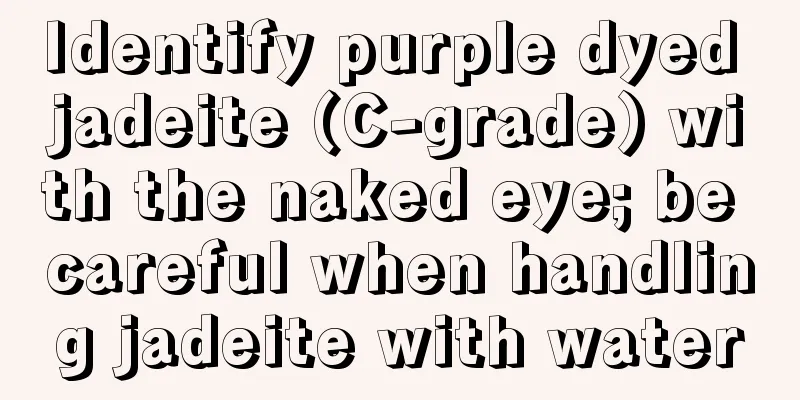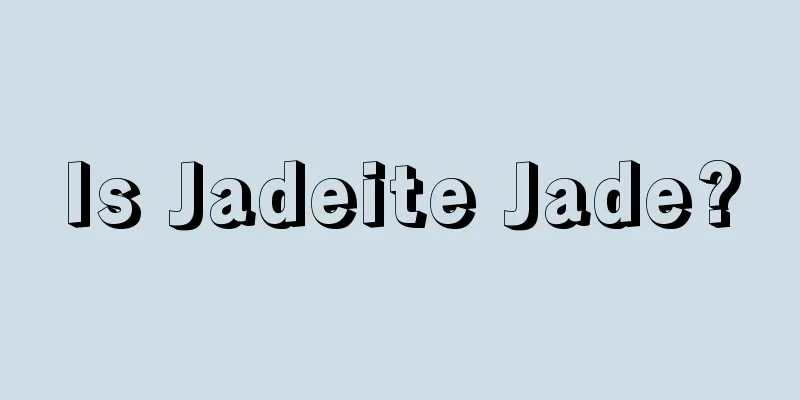They are all jade, so why are they divided into “old type” and “young type”?

|
The "type" of jade refers to its fineness, density, transparency and hardness. Well, today Jiamo will talk about these four elements separately. In the past two days, many friends in the circle of friends have asked me privately, jade is made up of individual jadeite minerals, and the fineness, density and hardness of these jadeite crystals should be the same, so why should they be divided into "old type" and "young type". Jadeite crystals have the same hardness, density and refractive index, but the situation is different for aggregates formed by a large number of jadeite crystals. After all, the crystals have different degrees of crystallization, sizes and shapes, and there are various characteristics between their bonding processes, which results in different physical properties of their aggregate as a whole. Therefore, the quality of jade depends on its fineness, density, transparency and hardness, rather than the physical properties of the crystals that make up the jade. Fineness. Fineness, as the name suggests, refers to the size and coarseness of the jadeite particles that make up jade. People in the industry call it "coarse flesh, fine flesh, or very fine flesh and very coarse flesh." Generally speaking, jade with coarse flesh is tender, while jade with fine flesh is old. To understand this fineness, we can compare the jadeite jadeite particles to millet and soybeans. When millets are piled together, what we see is a whole, but when soybeans are piled together, what we see is the soybeans and the spaces between them. If the average particle size (diameter) of jadeite particles is less than one millimeter and has a microcrystalline structure, the type of jade is relatively old, such as ice type and glass type. If the jadeite grains are large like beans and present a coarse crystal structure, this type of jade is relatively tender. Usually this type of jade is called "bean type". Bean type jade is also a common type of jade. fcgc66 fcpf18 |
<<: Learn Jade Identification Effortlessly in Five Minutes
>>: Should newly bought jade be placed in hot water to “dewax” first?
Recommend
Why do the peace knots look similar but have such different prices?
The peace locket is round on the outside and roun...
Is the jadeite collection very expensive? Need money urgently but feel powerless? Click here to teach you the fastest and most value-preserving cash
Jade, especially the best collection grade jade T...
Jade Appreciation | Jadeite "The Twelve Zodiac Guardian Buddhas" Jade Carving Series
Jadeite "The Twelve Zodiac Guardian Buddhas&...
Jade is not only beautiful, but also has these functions that are more valuable
Jade has always been the darling of the jewelry i...
For novice jade lovers, how to distinguish between ice jade and fake jade made of glass?
For people who love jade, they dare not buy it be...
It is difficult to tell whether jade is real or fake. Here is the most direct way to tell the difference with your naked eyes.
If you want to buy jadeite, it must be pure natur...
The most comprehensive explanation of the meaning of jade patterns in history, useful for collection!
The finished jade products currently available on...
What you need to know about jade: "Type, Water, Color, Ground, and Craftsmanship"
In the jade industry, "type, water, color, g...
Nearly perfect jade carving and design, beautiful jade carving
A successful jade work is inseparable from perfec...
You must remember these when purchasing jadeite, otherwise it is easy to get cheated!
Jade is becoming more and more popular with the d...
Can the value of jade be judged by its size?
Jade jewelry is now gradually entering thousands ...
There are certain methods to maintain jadeite. Are you using the right methods?
These maintenance methods may ruin your jade “Peo...
Which methods of identifying jadeite are not advisable?
These identification methods are not advisable. I...
Blue water jade, don't confuse it with oily green jade
The beauty of jade is natural. After years of bap...
I am a jade carver. I will use examples to illustrate how jade carving can achieve the goal of making the work meaningful and the meaning auspicious.
Jade must be crafted, the craftsmanship must have...









